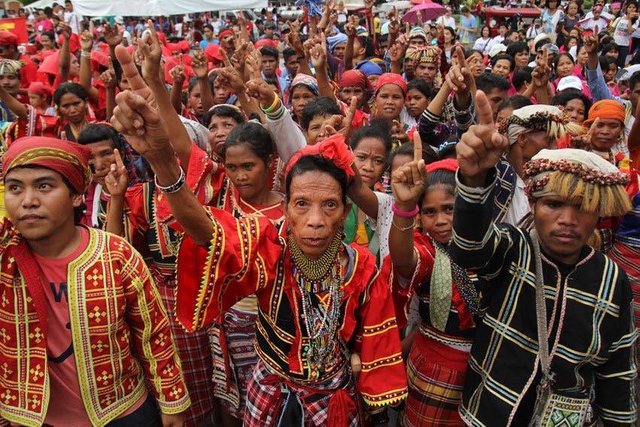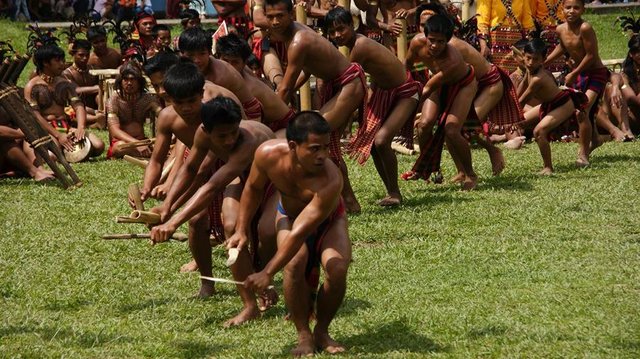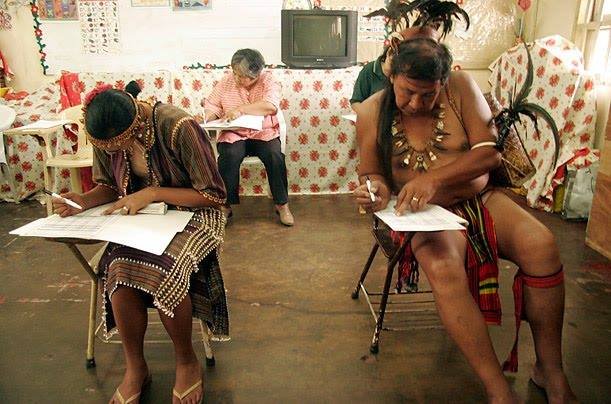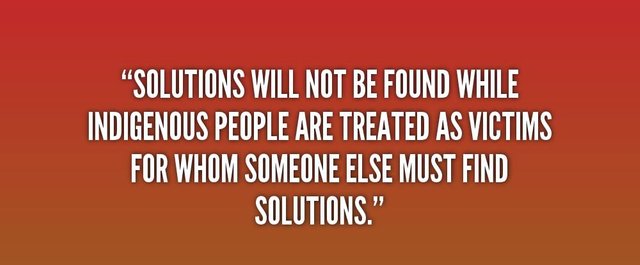The Indigenous People and Their Losing Spaces
No matter what group of indigenous people it is, it is a fact that each one of them shares different commonalities because after all, they also share the same history of development and destruction, not literally the same stories, but its factors.

The indigenous people all over the world held a distinct culture before the colonization from the other parts of the world. Formerly, these indigenous people were the original settlers having the highest regard on their customs and rituals. However, as time goes by they evolved into a minority group of decreasing social, economic, political power. Technology mainly threatened their traditions and modernity infringed on their rights.
They are usually involved in the ancestral land claim issue. For instance in a place rich in ethnic culture in the Philippines, it was known that the fear and terror brought by the mining corporations to the agricultural parts of Mindanao, Philippines which forced the indigenous people to leave their ancestral domain. It is also observed that these changes have significant impact on the continuity and disappearance of their physical and cognitive spaces which could only be understood by comparing the life experiences of the different indigenous groups.
Basically, it gives emphasis to the horrible effects of mining to the economic, political, socio-cultural and environmental life of the indigenous people.
Life Experiences of Indigenous Peoples
A. Culture
A single native person could identify their fellow ones by its physical appearance and their manner of speaking their native languages. Their tone in speaking and the dialect are distinct from the other groups. They could also be recognized by their family names, their traditional costumes which are very colorful and full of symbolisms, their preference for traditional foods, and their own cultural beliefs and practices. Most of them are aware of their cultural beliefs and practices especially in agriculture.
However, only the aged informants followed these practices. The adult and young adult informants knew only the beliefs and practices but are not familiar as to the process of performing them. Since the traditional knowledge is confined only to the older community members, the younger generations failed to integrate the same fully into their life.
What exacerbates the situation also are the processes of intermarriage and modernization penetrating the life of the natives due to intensified inter-ethnic contacts brought about by heavy in-migration of non-natives, formal education and the influence of Christianity. All these forces put the preservation of the cultural heritage at stake. With respect to their courtship and wedding beliefs and practices, they stay different from the mainstream culture because of these things.

B. Religion
For instance in the Higaunon tribe of the Philippines, Magbabaya is the supreme being of the Higaunon. He is god the father who is believed to have resided in trees, stones, lands, and even in water. The Higaunon also believed in the spiritual being in nature which they called apo. These rituals are done in dedication to their gods and deities and as a way of letting Him enter into the lives of the natives and give them a bountiful life.
Generally, old informants still stick to their traditional religious practices because they usually perform rituals especially when good things happen, while younger Higaunon are not practicing them anymore. The influence of the field like Christianity, education, social, technological changes and the demise of aged people who are the repositories of their culture lead to the slow disappearance of their religious practices and rituals.
The whole point for this is that before Judaism, Christianity, and Islam emerged in the world, the indigenous people of the planet have already established their own unique religious cultures and ways.
C. Economy
One of the causes for the disappearance of the ancestral domain of the indigenous peoples was through selling their lands to the migrants and capitalists because of poverty from the pressure of industrialization and modernization by the mainstream society. Sometimes, they just bartered their lands with primary commodities like salt, dried or canned fish, wine, etc.
Also, the switch in the occupations of the younger generation who have become professionals and who are no longer interested in land management is the other factor. This consequently leads to the failure of the family to pass on their rights over their ancestral domain to the next generation.

D. Politics
The traditional political structure of the indigenous people comprises of the supreme being such as a king, queen, sultan for Muslims, or datu and council of elders and other positions like warriors and religious specialists. The most sought-after qualities of a leader include the following: trustworthiness, approachability, education, maturity, integrity, helpfulness, servanthood, godliness, commitment to duty, and will power in order to help solve the problems of the community. However, some leaders came out out of the fear of the people from slavery or invasion.
Politically speaking, the traditional leaders of communities have a great role in keeping order and in claiming back their ancestral domain. However, the younger generations are no longer aware of the traditional selection process in choosing a ruler and their scope of power. Also, with modernization, premium is given to achieved position which gives the bearer a higher prestige compared to an ascribed one.
E. Environment
In previous times, there were focused on forested areas which contributed to the freshness of air as agriculture is also their main base of living. The richness and conduciveness of the land to commercial farming attracted migrants and capitalists to settle in the area. The natural resources available in their territories were affected like pollution of the rivers and streams. Also, the land utilized for commercial agriculture became acidic due to heavy reliance on fertilizer. The air quality was also affected because of the use of pesticides.

Environmental deterioration and depletion of the natural resources had been the result of population pressure, commercialization of farming, overgrazing of land because of the ranches, among others. The challenge of their environmental preservation, being part of their physical space, is immense since the causes are complex and the natives have limited capabilities to handle them. The older indigenous people are more aware of these concerns than the younger generations as the former were the ones who had seen the unfolding of events that caused all these environmental issues.
The land of the indigenous people can be equated to their culture because the loss of the land could also cause the loss of their culture. It is the central part of their existence which differentiates them from other people. Land is sacred because they have a distinct relationship with their land for it shapes their culture. The loss of their land gravely threatens the essence of their existence. For them, no person owns the land because everybody has access to it.
great initiative to get out the word for natives. You know this article reminds me of a few places in South east asia where the natives are driven out to make way for plantations, tourism, commercialization, etc.. I was in boracay once and my heart breaks when i saw the natives begging and the kids ran around without a chance to education...
Downvoting a post can decrease pending rewards and make it less visible. Common reasons:
Submit
There is no problem with developing a country because it is also important, but the government should not be ignoring these people because they are also part of the government. That doesn't mean that because they have made themselves to schools is that they will just step on them.
A success could not be called success when there are people left behind.
Downvoting a post can decrease pending rewards and make it less visible. Common reasons:
Submit
Its a very delicate situation... Government and indigenous people will have to make an agreement sometime in the future.
Downvoting a post can decrease pending rewards and make it less visible. Common reasons:
Submit
Its a matter of taking consideration the welfare of these people. The government could no just ignore them because they part of the community and the government itself. What's the problem here is that t hey were ignored, there rights were not considered just to satisfy the desire of the investors and other people who are interested in their properties.
Downvoting a post can decrease pending rewards and make it less visible. Common reasons:
Submit
It's a tough situation where the indigenous people may lose until they can get more people on there side to make laws to protect them.
Downvoting a post can decrease pending rewards and make it less visible. Common reasons:
Submit
Yes indeed. Hopefully the government will be there for them.
Downvoting a post can decrease pending rewards and make it less visible. Common reasons:
Submit
nice kabayan
Downvoting a post can decrease pending rewards and make it less visible. Common reasons:
Submit
Thanks kabayan. Sya nga pala, nasa pinas ka ba ngayon o nasa ibang bansa?
Downvoting a post can decrease pending rewards and make it less visible. Common reasons:
Submit
Pinas tayo :) Dito lang sa Metro Manila
Downvoting a post can decrease pending rewards and make it less visible. Common reasons:
Submit
Ah ok
Downvoting a post can decrease pending rewards and make it less visible. Common reasons:
Submit
Post included in: Steemprentice spotlight #3 - Steemit Mentors and Mentees helping everyone steem better!
Downvoting a post can decrease pending rewards and make it less visible. Common reasons:
Submit
Thanks @virtualgrowth for choosing my article. Highly appreciated.
Downvoting a post can decrease pending rewards and make it less visible. Common reasons:
Submit
You are most welcome! :)
Downvoting a post can decrease pending rewards and make it less visible. Common reasons:
Submit